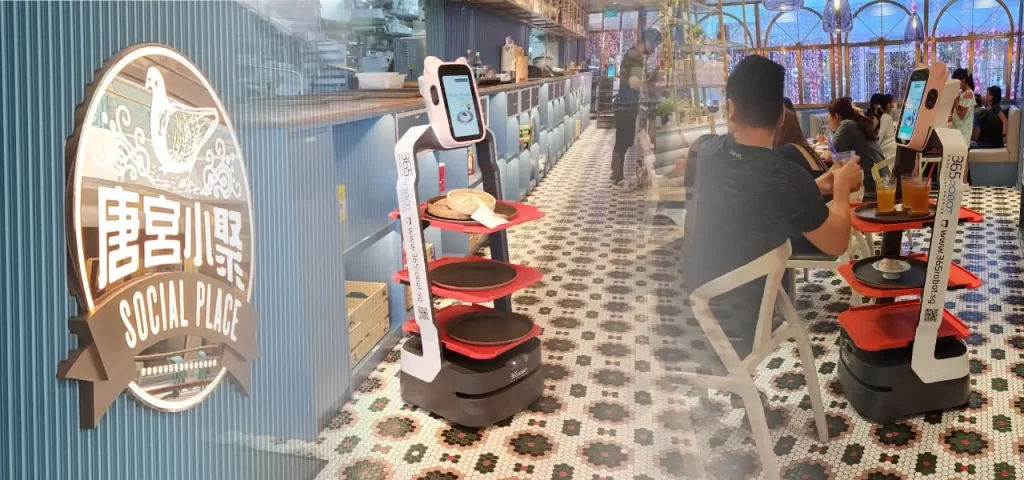In recent years, the restaurant industry has faced a significant labor shortage, with an increasing number of vacancies remaining unfilled. This shortage has caused restaurants to struggle in meeting customer demands, resulting in longer wait times, reduced customer satisfaction, and ultimately, lost revenue. However, robot waiters could provide a solution to this problem. These machines have the potential to revolutionize the restaurant industry by performing a variety of tasks, including taking orders and delivering food. Not only can they help alleviate the labor shortage, but they can also enhance the overall dining experience for customers. In this article, we will explore the benefits of robot waiters and examine how they can transform the way we dine out.
The Future of Robot Technology in the Restaurant Industry
The restaurant industry has always been quick to adopt new technologies, such as electronic cash registers and online ordering systems. With the rise of automation and artificial intelligence, it is natural for the industry to explore the use of robots. Robot technology has made significant advancements in recent years, enabling the creation of machines that can effortlessly perform complex tasks.
One of the most promising areas of robot technology development is in the restaurant industry. Some restaurants already use robot waiters, and there are numerous potential applications for this technology. For instance, robots could cook food, clean dishes, or manage inventory. As technology continues to advance, we can expect even more innovative uses for robots in the restaurant industry.
Why Choose a Robot Waiter?
Robot waiters offer several advantages over traditional human waiters. Firstly, they do not get tired or require breaks, allowing them to work continuously. Additionally, they are highly efficient and can complete tasks much faster than human waiters. This efficiency helps reduce wait times and enhances the overall dining experience for customers.
Another benefit of robot waiters is their ability to be programmed for various tasks, such as taking orders, welcoming customer, dish recommendation and delivering food. This versatility enables them to take on a wide range of responsibilities, freeing human waiters to focus on more complex tasks, such as providing personalized service to customers.
How Robot Waiters are Used in Singapore?
Singapore is at the forefront of robot technology adoption in the restaurant industry. Several restaurants in the country have already implemented robot waiters, with some offering fully automated dining experiences. Sri Bistari, an Indonesian restaurant in Singapore, employs a robot waiter for dirty plate collection. The robot waiter is equipped with sensors that enable it to navigate around obstacles and avoid collisions with customers.
Another popular restaurant in Singapore, “Rong Heng Seafood,” utilizes robot waiters to cook and serve dishes, creating a fully automated dining experience. Customers can order their food using a computer terminal and observe as the robots prepare and deliver their meals.
Is a Robot Waiter Cost-Effective?
One of the major concerns of restaurant owners regarding robot waiters is their cost. While the initial purchase cost of a robot waiter may be high, several factors make them a cost-effective solution in the long run. Firstly, robot waiters do not require breaks or vacations, allowing them to work continuously. Based on Singapore local use cases, restaurants enjoy cost savings of 20% and a return on investment (ROI) within 5 months of usage.
Moreover, robot waiters’ exceptional efficiency enables them to complete tasks much faster than human waiters. This reduction in wait times increases customer satisfaction and, ultimately, leads to higher revenue for the restaurant. Additionally, as technology costs continue to decrease, we can anticipate a decrease in the cost of robot waiters as well, making them an even more cost-effective solution in the future.
What Does This Mean for Human Labor?
While the adoption of robot waiters may appear as a threat to human labor, it is important to note that there will always be a place for human workers in the restaurant industry. While robot waiters can perform various tasks, they are still limited by their programming and lack the social skills and emotional intelligence of human workers. Furthermore, human workers play a crucial role in providing personalized service to customers, which is an integral part of the dining experience.
Instead of replacing human workers, robot waiters can collaborate with them to create a more efficient and streamlined dining experience. By undertaking tasks such as food delivery and dish collection, robot waiters can free up human workers to focus on more complex responsibilities, such as providing personalized service to customers.
365Robot—Your Robotic Solutions Partner
In conclusion, robot waiters have the potential to revolutionize the restaurant industry by addressing labor shortages and enhancing the overall dining experience for customers. While concerns about cost and their impact on human labor exist, it is important to remember that robot waiters can work alongside human workers to create a more efficient and streamlined dining experience. As technology continues to advance, we can expect to witness even more innovative uses for robots in the restaurant industry, solidifying their place as an essential component of the future of dining out.
If you are a restaurant owner looking to adopt robot technology, 365Robot can assist you. Our robots are cost-effective, efficient, and user-friendly, making them the perfect solution for restaurants of all sizes. Additionally, we offer comprehensive support and training to ensure that your staff can easily utilize our robots.

